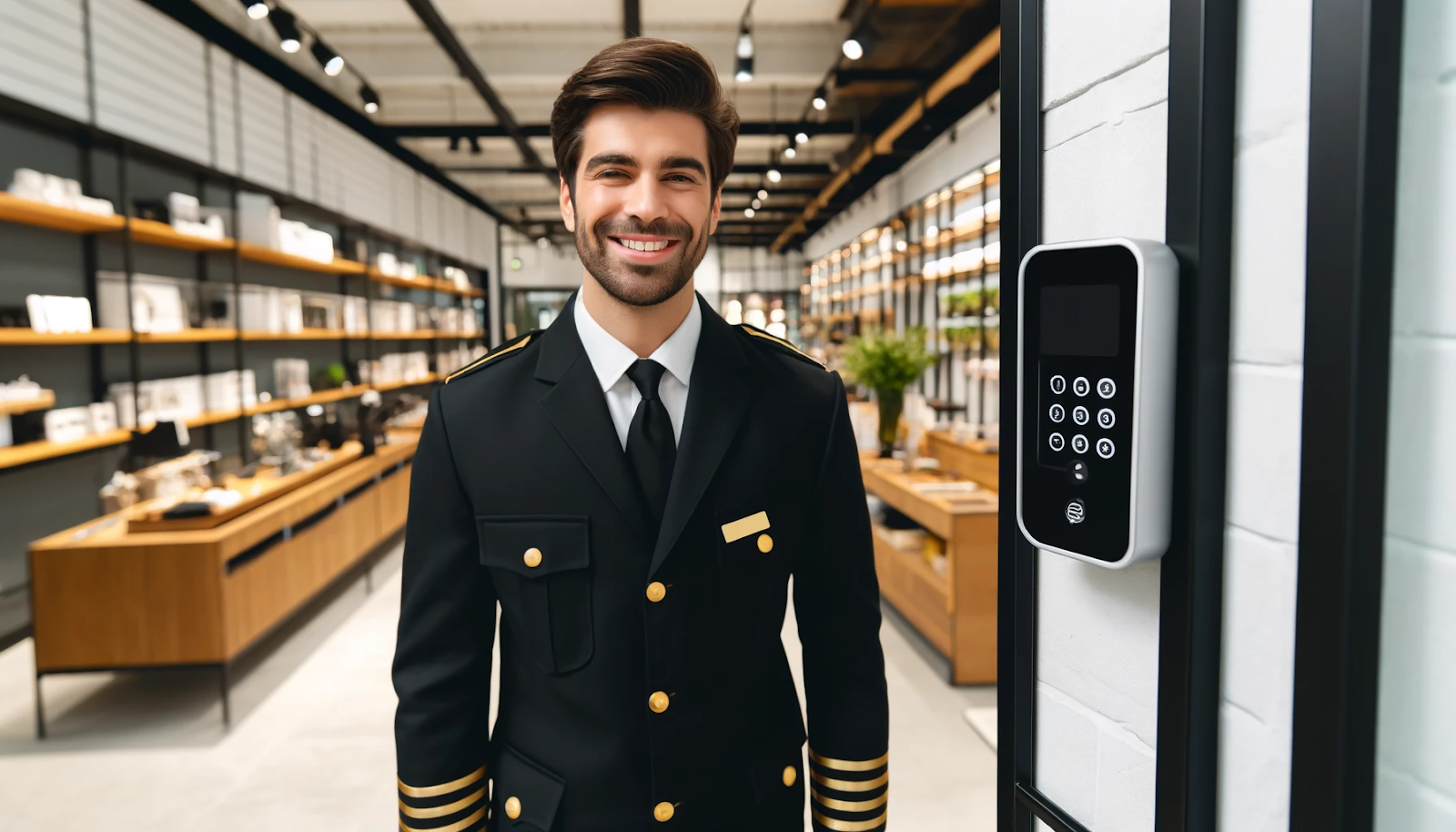Implementing access control systems in retail spaces is crucial for securing employee-only areas and protecting sensitive information. As a property manager, chief security officer, or security company hiring manager, you understand the importance of safeguarding your retail environment. This blog will guide you through the key aspects of access control systems, from their benefits to practical implementation strategies.
Why Access Control Systems Are Essential
Access control systems are designed to regulate who can enter specific areas within your retail space. These systems help:
- Enhance Security: By restricting access to sensitive areas, you minimize the risk of theft, vandalism, and unauthorized entry.
- Protect Sensitive Information: Secure areas where financial records, customer data, and other confidential information are stored.
- Improve Employee Safety: Ensuring that only authorized personnel can access certain areas reduces the potential for workplace violence or accidents.
- Streamline Operations: Automated access control systems can improve operational efficiency by reducing the need for manual security checks.
Types of Access Control Systems
There are various types of access control systems available, each offering different levels of security and convenience:
- Keypad Entry Systems: Require users to enter a code to gain access. These are simple to install but may be less secure if codes are shared or forgotten.
- Card-Based Systems: Use swipe or proximity cards. These provide a higher level of security as cards can be deactivated if lost or stolen.
- Biometric Systems: These utilize fingerprints, facial recognition, or iris scans. They are highly secure because they rely on unique biological traits.
- Mobile Access Systems: These systems allow users to gain access via their smartphones. This is convenient and can be easily managed remotely.
Implementing Access Control in Retail Spaces
When implementing access control systems, consider the following steps:
1. Assess Your Needs
Conduct a thorough assessment of your retail space to identify which areas require restricted access. Common areas include:
- Stockrooms
- Offices
- Cash handling areas
- IT rooms
2. Choose the Right System
Select an access control system that best fits your needs and budget. For high-security areas, biometric or card-based systems are ideal. For less sensitive areas, keypad entry or mobile access systems may suffice.
3. Install and Configure
Work with a professional security company to install and configure your access control system. Ensure all entry points are secured, and the system integrates with your existing security infrastructure.
4. Train Your Staff
Educate your employees on the importance of access control and how to use the system. Provide training sessions and create easy-to-understand guides.
5. Monitor and Maintain
Regularly monitor access logs and maintain your system to ensure it operates smoothly. Periodically update access permissions and review security protocols.
Benefits of Access Control Systems
Implementing access control systems offers several benefits:
- Deterrence: The presence of an access control system can deter potential intruders.
- Accountability: Access logs provide a record of who accessed specific areas and when aiding in investigations if an incident occurs.
- Flexibility: Modern systems allow for easy updates to access permissions, accommodating changes in staffing or security needs.
FAQs
Q: What is the cost of implementing an access control system? A: The cost varies based on the type and complexity of the system. Basic keypad systems are relatively inexpensive, while advanced biometric systems may require a larger investment.
Q: How do I choose the right access control system for my retail space? A: Assess your security needs and budget, and consult with a security professional to determine the best system for your requirements.
Q: Can access control systems be integrated with existing security measures? A: Yes, most modern access control systems can be integrated with CCTV cameras, alarm systems, and other security measures for comprehensive protection.
Q: How often should I update access permissions? A: Update access permissions regularly, especially when staff or security policies change. Periodic reviews ensure that only authorized personnel have access to restricted areas.
Q: What if an employee loses their access card? A: To maintain security, immediately deactivate the lost card and issue a new one.
Access control systems are a vital component of any retail security strategy. Securing employee-only areas and protecting sensitive information, these systems help create a safer, more efficient working environment. Assess your needs, choose the right system, and ensure proper implementation and maintenance to maximize the benefits of access control.
.png)
.png)
.png)

.png)
.png)

.png)
.png)
.png)
.png)
